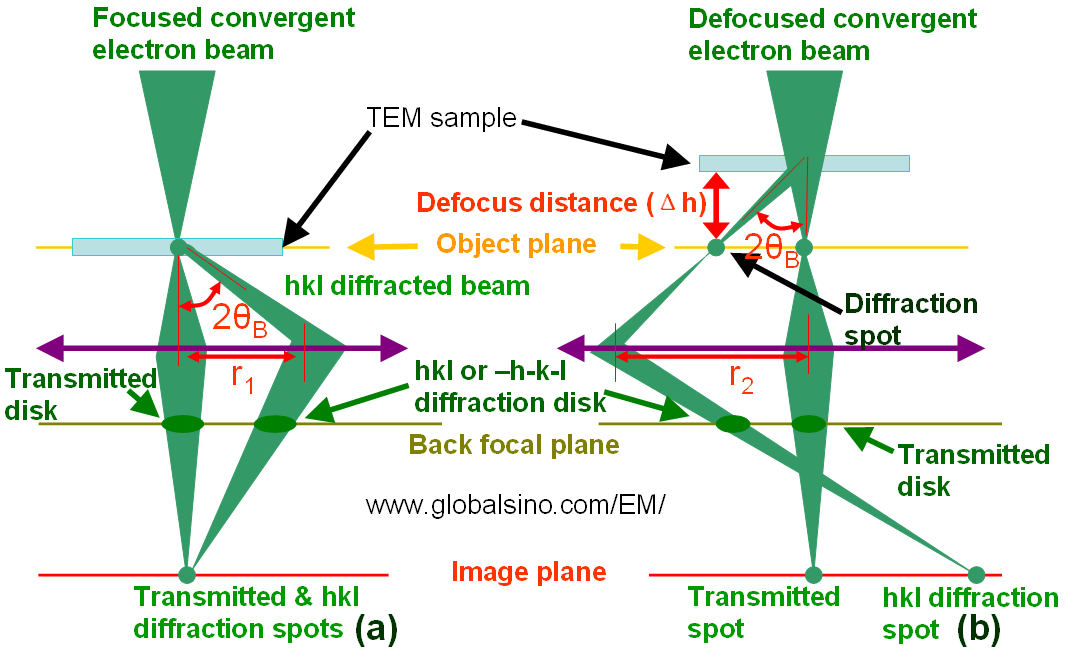|
|
Defocus Effects due to Change of TEM Sample Height
- Practical Electron Microscopy and Database -
- An Online Book -
|
|
https://www.globalsino.com/EM/
|
|
This book (Practical Electron Microscopy and Database) is a reference for TEM and SEM students, operators, engineers, technicians, managers, and researchers.
|
=================================================================================
The incident electron beam can be considered as made of a set of incident rays within an incident cone. In two-beam condition, the resulting pattern located in the back focal plane consists of two disks but not of two spots, namely the transmitted and hkl diffracted disks as shown in Figure 3886 (a). Given the strength of the objective lens is unchanged, when the defocus is changed from zero to Δh by adjusting the height of the TEM sample, the transmitted and diffracted beams in the diffraction pattern in the back focal plane will be changed from Figure 3886 (a) to (b). In this case, the diffraction spots in the image plane also move. Assuming the strengths of the other lenses in the TEM system are not changed, the diffraction pattern on the TEM screen or detector will be very different from the cases in Figure 3886 (a) to (b). If you are working on TEM-imaging mode, the TEM image will also be very different.

Figure 3886. TEM optics under conditions of focused (a) and defocused (b) convergent incident electron beams.
In TEM image mode, two main ways can be used to obtain a caustic curve:
i) Lower the sample height to below its optimal focus height (standard z-height) when a fine electron probe is focused onto the sample, keeping the objective lens current fixed. At a specific magnification, the size of caustic curve is determined by the height change.
ii) Defocus the objective lens when keeping the sample height fixed. At a specific magnification, the size of caustic curve is determined by the defocus value.
|
=================================================================================
The book author (Dr. Liao) welcomes your comments, suggestions, and corrections, please click here for submission. You can click How to Cite This Book to cite this book. If you let Dr. Liao know once you have cited this book, the brief information of your publication will appear on the “Times Cited” page. This appearance can help advertise your publication.
|
|
